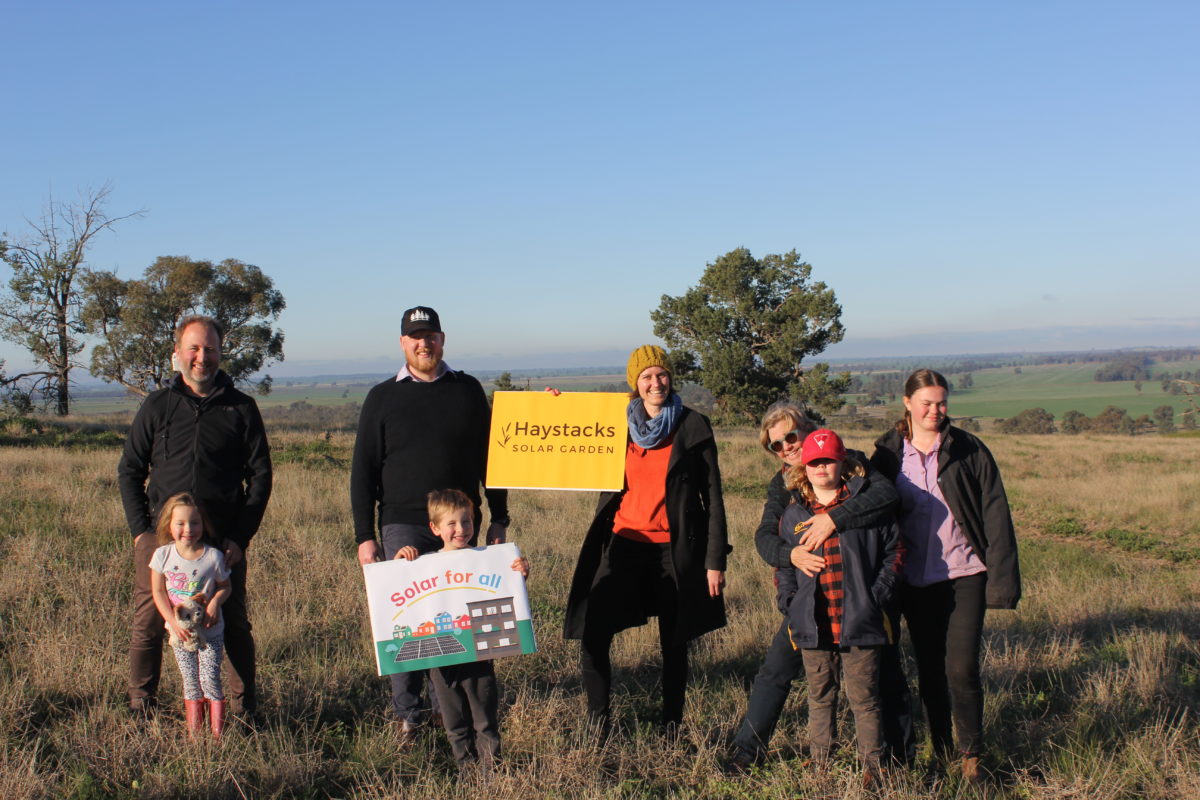Fostered through community engagement, Walters says goodwill lays the groundwork for not just individual projects to thrive, but for future developments to blossom. A great financial model isn’t everything, she adds, projects need to be relatable.
Additionally, Walters says that project developers need to involve communities on the journey towards realization and give them an understanding of what really powers their lives.
“It’s really true that people don’t remember what you say, but how you made them feel,” Walters tells pv magazine Australia.
Located in Grong Grong in the Riverina region of southern New South Wales, Walters excitedly explains the solar garden’s development application was approved this week with, importantly, no objections from the local community. Given the reported resistance to French renewable energy company Neoen’s solar farm in Bathurst, as well as continued local opposition to proposed wind projects, the development approval came as both a relief and reinforcement of the Haystacks model.
The project has been simmering for almost four years, but really took root this year after it was awarded a grant from the NSW Government’s Regional Community Energy Fund. Now, well and truly into its first phase of building both co-op membership as well as constructing the solar farm itself, Wednesday marked the official end of Haystacks’ EOI period.
Through November, the project developers had sought applications from corporate entities, brokers or retailers interested in negotiating a power purchasing agreement (PPA) with their members.
Seeking long term commitments from “a bold offtaker that values community owned energy and is interested in igniting change in the Australian energy sector for social and environmental good,” the project proponents openly acknowledge the PPA range it is seeking is higher than the renewable sector’s standard. This, they say, is to value the premium social license, social access and highly innovative nature of this project.
“We’ve had some interest,” Walters says. With applications only just closing, it is still too soon say what kind of deal will be brokered, but Walters is optimistic that there is appetite for projects where a social license sits alongside environmental motives.
“We really think it’s going to be a selling point.” The project’s ambition is to expand from the current project baseline of making money and move towards the loftier goal of democratising energy.
Community model
Since opening applications for co-op membership in September, the project has attracted roughly 200 members. As the only large scale community-owned solar garden project underway in NSW, the recruiting process has been a journey of discovery for the project’s leaders as much as for the members themselves.
Initially vying for membership from those based in the Riverina region, the team soon realised they were barking up the wrong proverbial tree. “Locals told us ‘it’s a great project, but you have to take it to the city,’” Walters says. Which is precisely what they did. It worked a treat – so far the leading council area for co-op membership has been Sydney’s inner-west, which has a large share of both apartment dwellers and renters, part of the estimated third of Australians currently locked out of the solar market.
The aim is to secure 333 solar gardeners for each of the 3 kW ‘solar plots’ hopefully by the end of the month, if not the end of the year. Once the project has received applications from roughly 350 Australians, their $4200 one-off payment will be collected, with construction of the solar farm expected to begin shortly after.
The co-op, along with their partnering organisations, will build the solar farm which will be owned by the members. Each of them will then get the same return, in the form of a dollar amount off their electricity bill, from the sale of the energy generated on their plot into the grid. The hope is that the prospective PPA will shelter members from market volatility and stabilise returns.
Importantly, members do not pay for maintenance of the array. Instead, a small portion of the money generated from the solar energy sale goes towards upkeep of the solar garden.
Community-owned renewables are really just burgeoning in Australia, but Komo Energy founders Jonathan Prendergast and Gerald Arends, who have partnered on the project since its inception, are hopeful the model will find roots here as it has in parts of Europe. “We do see a lot of investment opportunities in renewables for Australia being lost at the moment,” Gerald Arends tells pv magazine Australia.
While large-scale solar projects here have been hindered by grid congestion and transmission issues, small-scale utility-scale PV, particularly around the 5 MW mark, can fly under the radar of the NEM’s congestion woes, adding to the solar garden’s value proposition.
Walters stresses that anyone in New South Wales is welcome to join the Haystacks co-op, which they hope will pave the way for more community-driven and community-minded renewable projects. Walters is also quick to add that even though the official EOI period closed yesterday, Haystacks is still open to enquiries.
This content is protected by copyright and may not be reused. If you want to cooperate with us and would like to reuse some of our content, please contact: editors@pv-magazine.com.









2 comments
By submitting this form you agree to pv magazine using your data for the purposes of publishing your comment.
Your personal data will only be disclosed or otherwise transmitted to third parties for the purposes of spam filtering or if this is necessary for technical maintenance of the website. Any other transfer to third parties will not take place unless this is justified on the basis of applicable data protection regulations or if pv magazine is legally obliged to do so.
You may revoke this consent at any time with effect for the future, in which case your personal data will be deleted immediately. Otherwise, your data will be deleted if pv magazine has processed your request or the purpose of data storage is fulfilled.
Further information on data privacy can be found in our Data Protection Policy.